In Brentford’s last-ever season at Griffin Park, the Bees are in prime position to mount a charge for the automatic promotion places. The man arguably spearheading that charge is Algerian left-winger Said Benrahma. The 24-year-old currently has nine goals and five assists to his name, including a recent hat-trick away at Hull City.
Such is his quality he has been widely tipped for a move to the Premier League. Recent reports have linked Benrahma to Leicester City and Mikel Arteta’s Arsenal. Being linked to teams challenging for the Champions League is a hallmark of his supreme technical quality, which I shall explore later.
In this tactical analysis, in the form of a scout report, we will look at Benrahma’s strengths and play-style and do an analysis to see why he is such an integral part of Brentford’s tactics.
Overview and style of play
Brentford signed Benrahma in the summer of 2018, for a reported fee of £1.53m from Ligue 1 club OGC Nice. There had previously been loan moves to French clubs: Angers, Ajaccio and Châteauroux.
Thomas Frank plays a 4-3-3 in his Brentford team. Here, Benrahma plays as the left-winger, albeit with the license to move centrally between the lines. To understand Benrahma it is important to understand the dynamics of Brentford’s tactics as a whole. Frank opts for a progressive style of play with a focus on keeping the ball on the ground and playing through the lines. This style suits Benrahma very much and helps maximise his strengths, as I will now analyse.
Ball-carrying ability
For a winger dynamism is an important trait; you need the ability to do the unexpected and commit defenders, thus opening up space for teammates. Moreover, having a low centre of gravity can help – it enhances agility and gets them off the mark quicker. These factors are applicable to Benrahma. Statistically speaking the Algerian’s effective dribbling qualities are showcased by him completing 3.6 dribbles per 90, at a 59% success rate.
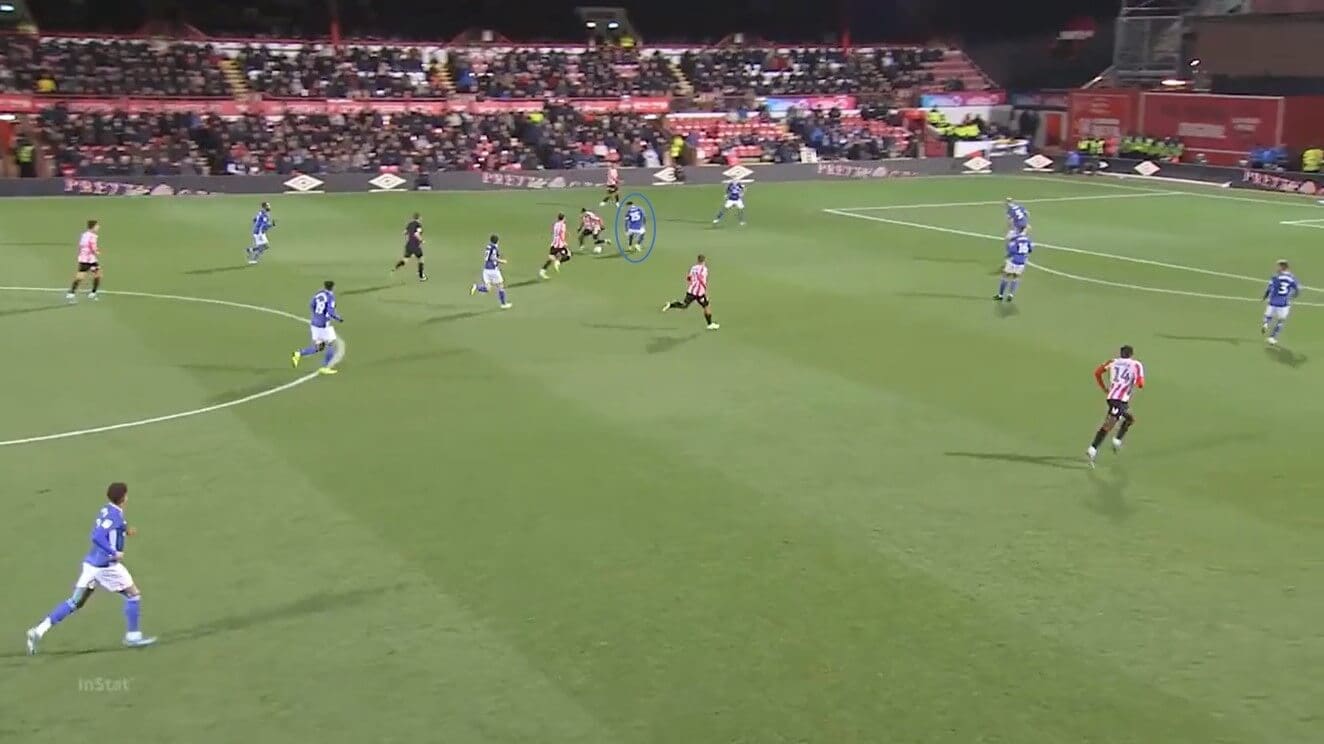
In this example above, against Cardiff, we see an end product as well as a regular Benrahma movement. He receives the ball off Mathias Jensen and proceeds to pull off a dazzling spin to go past Cardiff midfielder Marlon Pack. The ex-Nice man then has the intelligence to play in Bryan Mbeumo, who finishes competently, which is shown below.
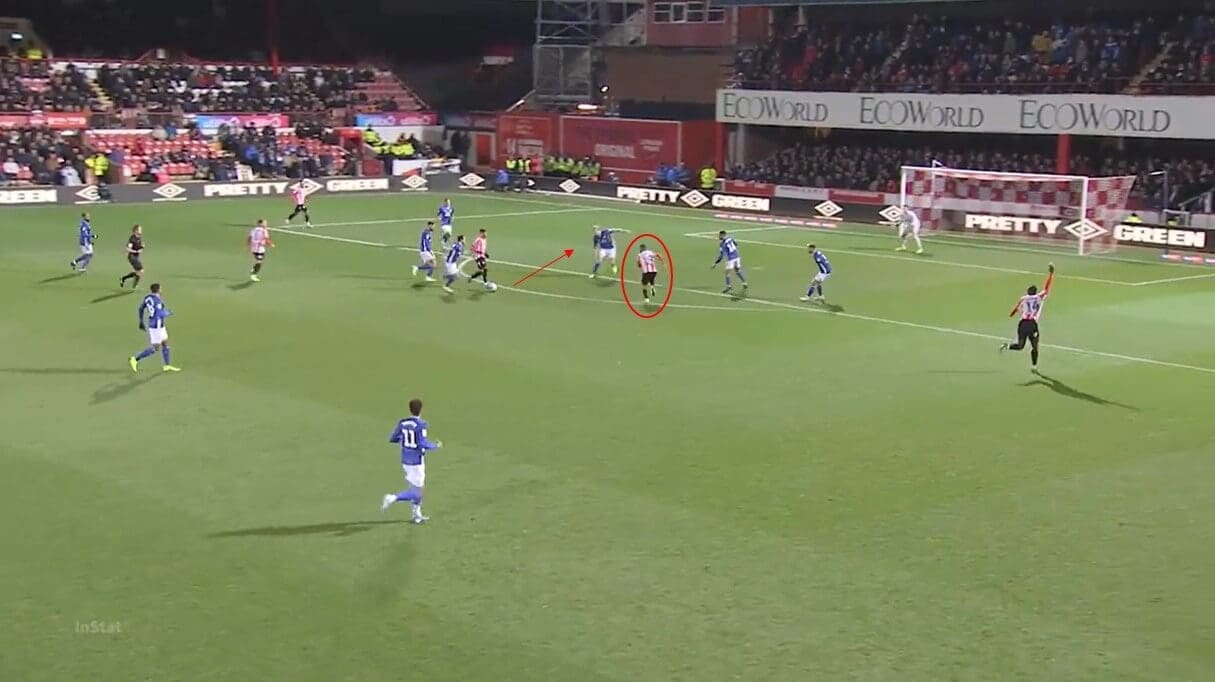
Another benefit of Benrahma’s dribbling qualities is breaking the press or counter-press. His balance and flair can see him bypass the pressing opposition and see large volumes of space open up to then be exploited by that fearsome trident of forwards Brentford have. In the example below Barnsley have attempted to suffocate the Bees on the far side of the pitch. However, Benrahma puts the ball through Toby Sibbick’s legs and escapes the intense pressure the Tykes have put on. Furthermore, when centre-back Aapo Halme steps out to attempt to cut the attack off, also seen below, Benrahma demonstrates awareness and strength to dribble past him as well.
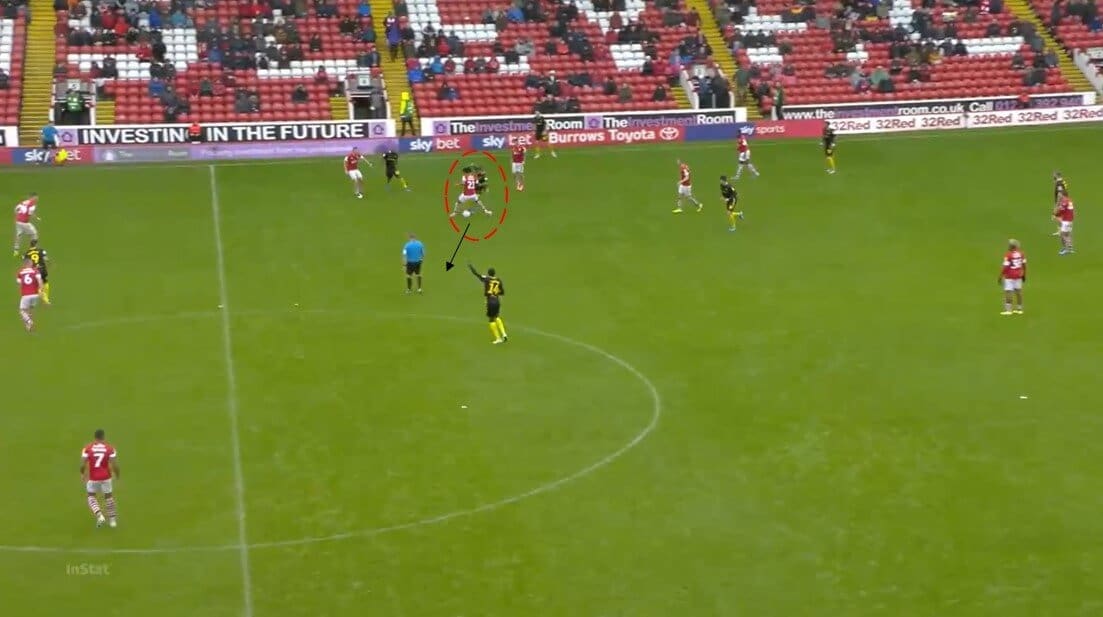
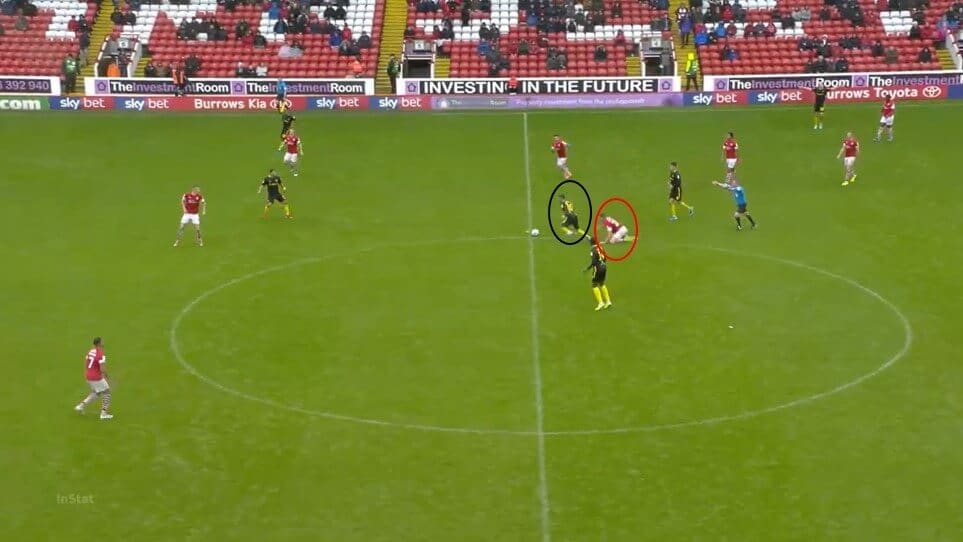
Frank’s tactics of playing out from the back will usually attract a press from the opposition to try and force a turnover in an attacking region. Such an approach requires players who are technically proficient and press-resistant – Benrahma epitomises these attributes. The Algerian can exploit vacated space, attract defenders for his peers to take advantage of, or draw fouls when under pressure.
Such is the confidence he possesses he is, at times, guilty of overdoing it. There can be moments whereby he tries one too many skills or flicks and loses possession in an area where a counter-attack is possible. To make the step-up and be effective once more Benrahma needs to iron out those shortcomings can be efficient, whilst dangerous and unpredictable.
Penetrative passes
Benrahma can often be seen in the left-half-space position. This area offers the greatest threat in attacking situations. There are a number of options available to the ball receiver. Most commonly for Benrahma, due to him being right-footed, he opts to play wide-right into Mbeumo. Mbeumo, unlike Benrahma, prefers to hug the touchline to a greater extent to allow himself more room for his diagonal runs or trademark far-post shots with his stronger left foot.
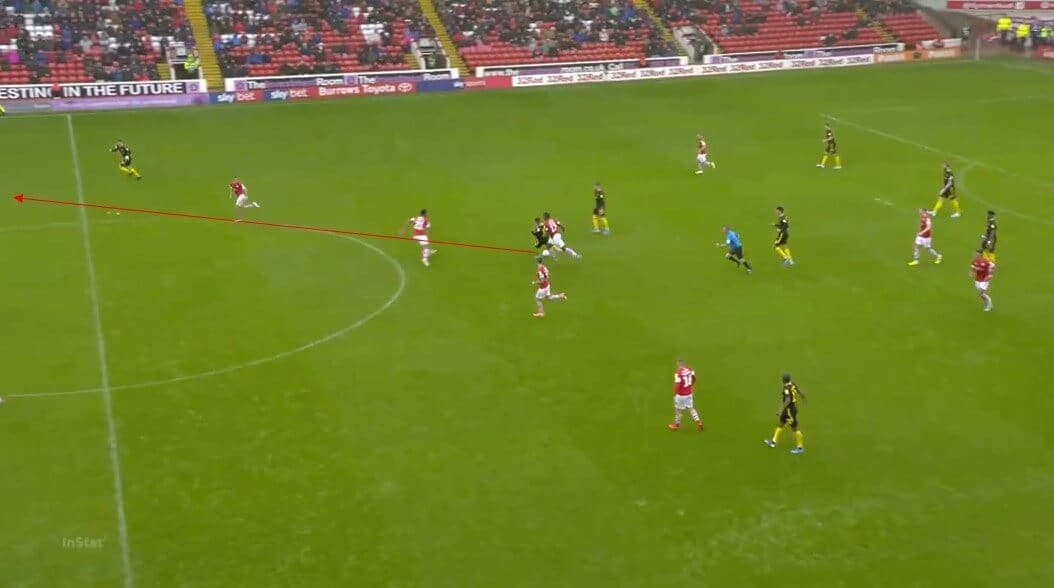
In the image above Benrahma eliminates three Barnsley players by threading a ball through to right-winger Sergi Canos. Such a pass is regularly on because Frank instructs his wingers to stay on the outside of the opposition full-backs. Ollie Watkins also positions himself on the shoulder in case of a through ball. This gives the opportunity of a diagonal ball in-behind, which can also be seen below.
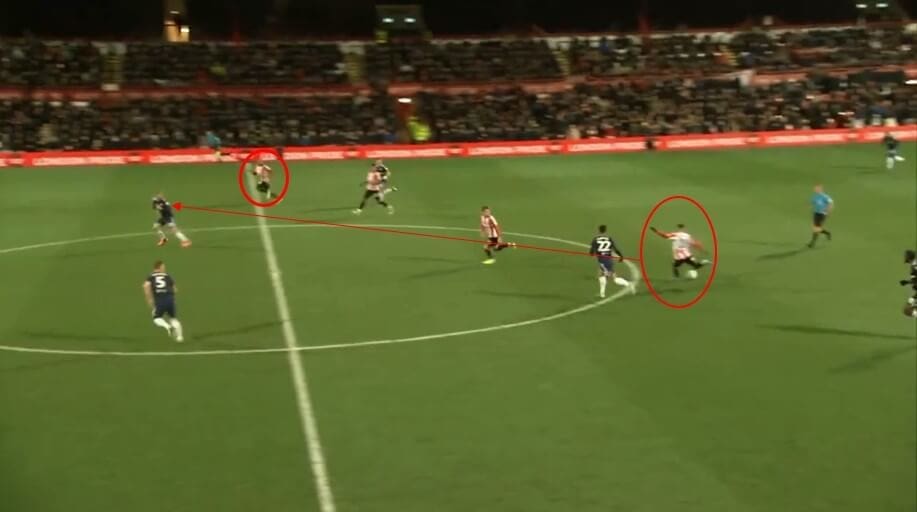
Benrahma once more plays an incisive, diagonal ball into an onrushing Mbeumo to attack. The ability to play these balls opens up counter-attacking opportunities as well utilising the dribbling skill of his teammates.
His ability to unpick defences can also be an asset when facing up to low blocks. As the season progresses it is likely more teams opt for this approach in fear of the Bees’ potent attacking unit. The illustration below depicts a sustained Brentford attack where Millwall have settled into a deep defensive structure. Jensen is making a run from deep unmarked, and Benrahma lifts the ball over the Millwall defence, essentially taking six players out of the game.
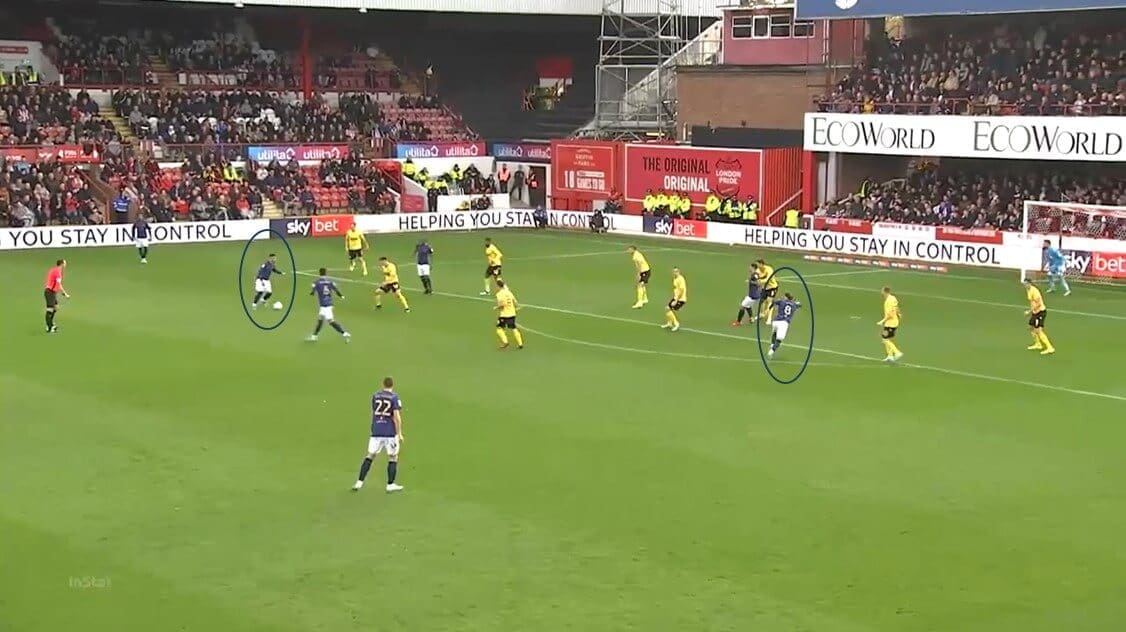
In another example seen below, we can see the link-up between Watkins’ movement and Benrahma’s technical quality. Benrahma picks it up in the right-half-space and is able to find Watkins peeling off the two defenders.
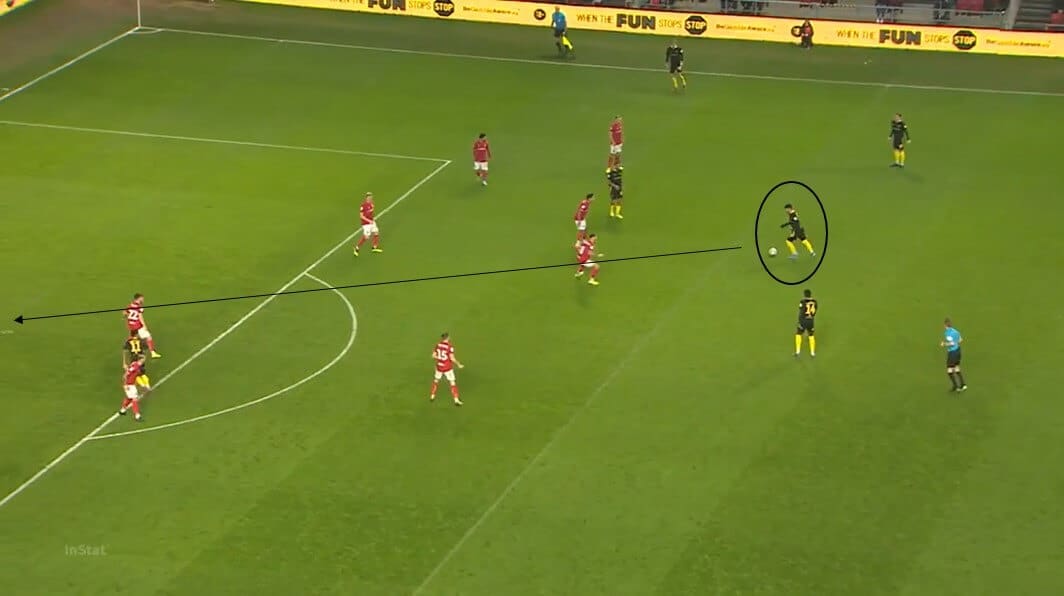
The Algerian international completes 2.3 key passes per 90. Benrahma’s intricacy and creativity have contributed to the Bees scoring the second-highest goals in the EFL Championship this season with 54, only behind league leaders West Brom.
Relationship with Rico Henry
Rico Henry’s and Benrahma’s attributes intertwine nicely to create a balance that is impactful in the final third especially.
Henry is your archetypal modern full-back, often positioned high and wide to stretch the play vertically and laterally. He can often be seen overlapping on the outside, either to offer the opportunity for a cross or even slightly attract the defender to give Benrahma a yard of space. Henry’s attacking instincts provide the width and balance to permit Benrahma to drift inside and cause havoc in central areas of the pitch with his trickery. Additionally, Benrahma’s quick feet and nimbleness mean he doesn’t get overcrowded centrally often.
In the image below, the ex-Walsall man acts as a diversionary runner for Benrahma. By making this unselfish run he overloads Swansea right-back Connor Roberts, who cannot now pressure Benrahma without Henry being played in. This intelligent run gives room for Benrahma to manoeuvre and place the shot into the top corner.
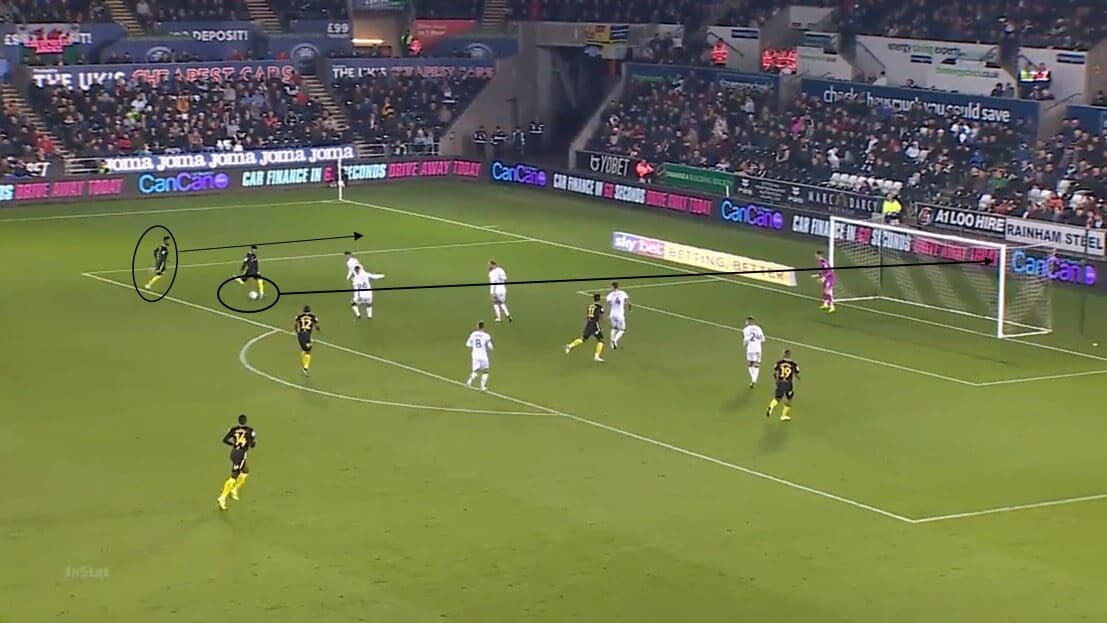
We can also see the natural link-up between the two in the graphic below. Henry has got goal-side of Andre Ayew and is making an overlapping run. Benrahma has the awareness and skill to back-heel the ball so Henry can run onto it into a great amount of open space as Roberts has been drawn in.
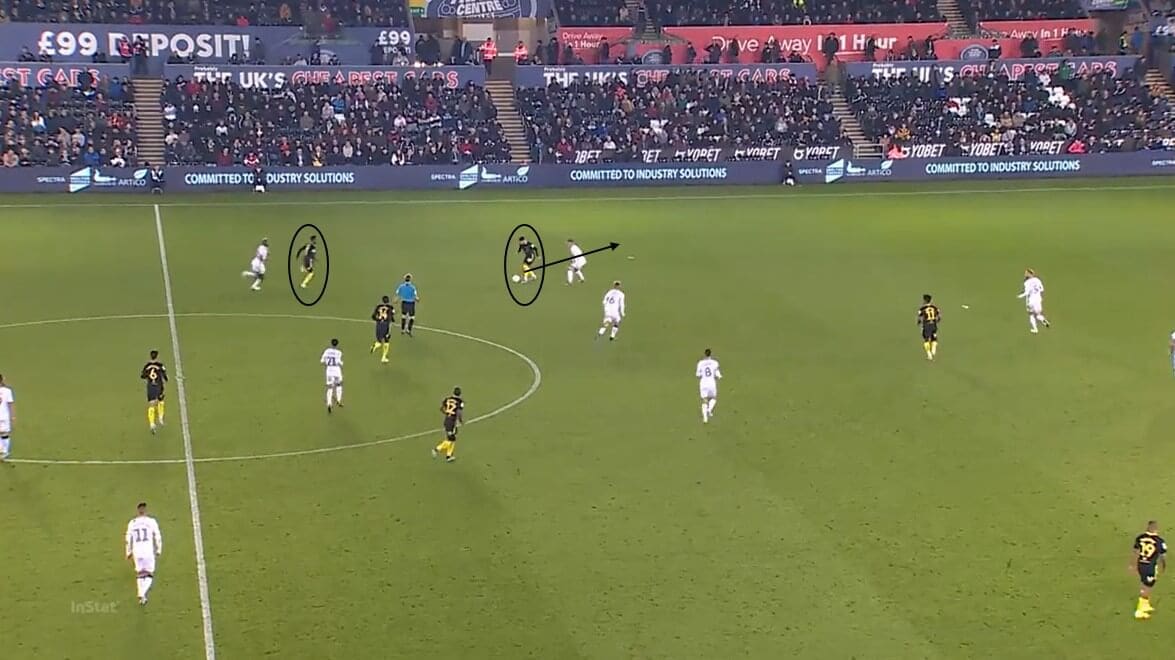
Henry’s presence and tendencies allow Benrahma to thrive and be influential in attacking stages of play. There needs to be a degree of care in their respective attacking exploits to ensure they do not overcommit and leave the left flank open to attack.
Conclusion
With his current chance creation output and offensive statistics, it is no surprise to see Benrahma not only be linked with Premier League clubs but those in the upper echelons of the division. The Algerian no doubt has the technical quality to play to that level, a question mark though remains whether he can translate it into goals and assists in arguably the most intense, chaotic league worldwide. Benrahma currently thrives in a system that is designed to attack with freedom, with players alongside him that can feed him and cover him defensively – that may not be the case elsewhere.





Comments